‘More like a bowl of lollies’: A dietitian ranks 10 popular breakfast cereals
Are you getting what you need nutritionally from your favourite breakfast cereal? Susie Burrell breaks it down, and shares her top recommendations.
Despite many cereals being considered a processed and high-sugar breakfast option, a large proportion of Australians start each morning with a bowl, data from the Australian Health Survey shows. With more than 450 types of cereal available in supermarkets, it is no wonder we can be left feeling a tad confused when trying to choose the best variety.
So, can breakfast cereal be a good choice nutritionally? How do you choose a good one, and what is the best way to enjoy it?
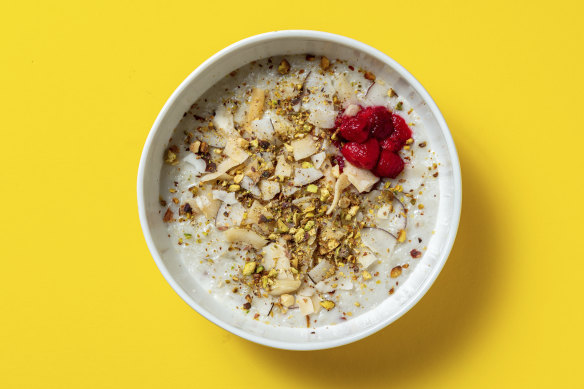
The importance of whole grains
Minimally processed wholegrain breakfast cereals, such as oats and bran-based options, are rich in essential nutrients, including slowly digested carbohydrates that support energy regulation.
They are also rich sources of dietary fibre, a nutrient essential for digestive health. When the diets of those who regularly consume a wholegrain breakfast cereal are compared with those who skip a daily bowl of grains, the latter group’s overall intake of dietary fibre and B-group vitamins is significantly lower.
With the average Australian getting just two-thirds of the recommended daily intake of dietary fibre, and bowel cancer rates on the rise, it is safe to say that many of us could benefit by starting the day with a bowl of whole grains.
Considering blood glucose levels
One of the biggest issues nutritionally when considering breakfast cereals is the impact on blood glucose levels. Heavily processed breakfast cereals, including flakes, puffs, clusters and biscuits, are made using refined forms of whole grains.
When a whole grain is processed, it reduces the overall nutrient profile and creates a refined grain that is digested more quickly than whole grains, resulting in relatively high fluctuations in blood glucose levels.
High blood glucose levels are an issue for energy regulation and can damage cell health. For those with a genetic predisposition, this can increase the risk of developing blood glucose control issues including insulin resistance and type 2 diabetes. For this reason, when it comes to breakfast cereal, wholegrain, lower glycaemic index and lower carbohydrate choices are the best options nutritionally.
10 popular supermarket cereals ranked in order of health
1. Kellogg’s All-Bran
With a massive 12g of dietary fibre per ½ cup serve, few cereals are as good for digestive health as the original All-Bran. While the second ingredient listed is sugar and a single serving contains 7g of sugar, nutritionally the digestive health benefits outweigh any negative associated with a small amount of sugar overall. This is thanks to the mixture of both soluble fibre, which plays a key role in appetite control, and insoluble fibre for a healthy gut.
2. Uncle Tobys Quick Oats
You can’t go wrong with a 100 per cent oat-based product. While whole original oats are a better option for blood glucose control than quick-cook oats, oats of any variety are still a strong option nutritionally, offering a good amount of protein and dietary fibre. The key is to opt for the plain varieties and add some fruit, vanilla or cinnamon for sweetness, as the flavoured varieties can add 2-3 tsp of sugar to your wholegrain oat bowl.
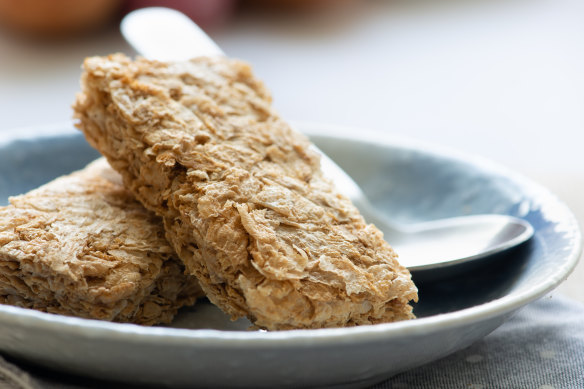
3. Weet-Bix
It’s hard to find fault with Australia’s top-selling breakfast cereal. It does contain some added sugar and salt, but with a 97 per cent wholegrain base, 4g of dietary fibre per two breakfast biscuits, less than 1g of sugar per serve and a range of key nutrients including iron and B-group vitamins, Weet-Bix is a solid breakfast cereal choice.
4. Kellogg’s Special K
The more processed a cereal is, the more difficult it is to rate nutritionally as there are many factors to consider, including the percentage of whole grains, glycaemic load, added sugar and salt content and the overall nutritional profile. While Special K is highly processed, its relatively high protein content improves its ranking when compared to other varieties of flaked cereal.
5. Kellogg’s Just Right
With 64 per cent whole grains and little added salt, Just Right offers a number of positive nutritional qualities. The downside is that it also contains several different added sugars, which bump its overall sugar content to almost 2 teaspoons per serve for just 4g of dietary fibre. This means it is not the best choice for those with blood glucose regulation issues.
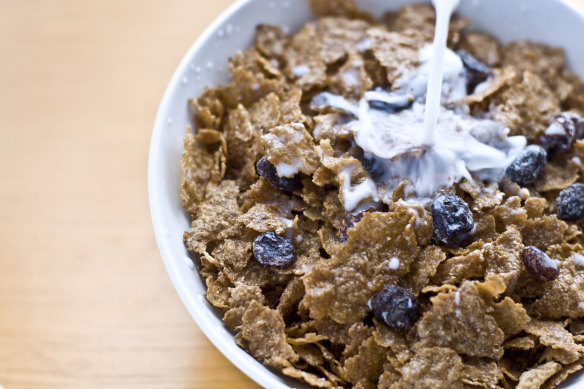
6. Kellogg’s Sultana Bran
While Sultana Bran is extremely high in dietary fibre, offering almost 7g per serve, and a mix of both insoluble and soluble forms to support gut health, the high proportion of dried fruit also significantly increases the overall sugar content. This means you are getting more than 12g of sugars in three-quarters of a cup of cereal.
7. Kellogg’s Nutri-Grain
The second most popular breakfast cereal in Australia certainly tastes good, thanks to the 2 teaspoons of sugar per bowl. But nutritionally, the exceptionally low amount of dietary fibre in Nutri-Grain makes it a poor cereal choice. While it is heavily promoted for its high protein content and added minerals, including calcium and iron, it only suits those with extremely high energy demands. Think of it as a good source of energy rather than a healthy breakfast option.
8. Milo Cereal
Another cereal that is heavily marketed for the added nutrients it offers, Milo Cereal is heavily processed, and does not stand out in any of the core areas a nutritionally strong breakfast cereal will. With sugar the second ingredient and low amounts of fibre, whole grains and protein, there are much better breakfast cereal options for kids, in particular.
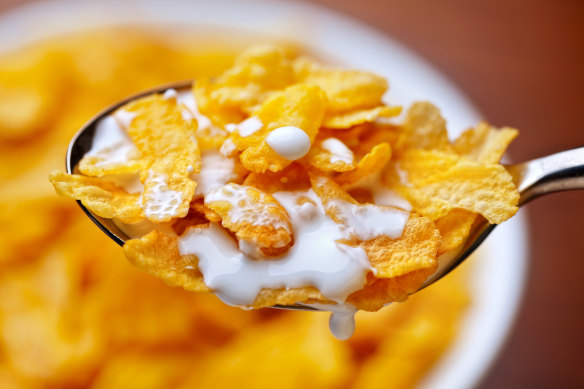
9. Kellogg’s Corn Flakes
With a base of refined corn, sugar and salt, there are few nutritional positives in a bowl of Corn Flakes. Extremely low in dietary fibre and relatively high in salt, the high carbohydrate load coupled with very little dietary fibre means this cereal is not a good option for blood glucose control, satiety or digestive health.
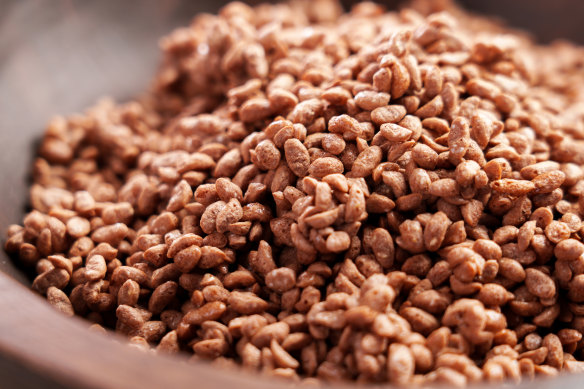
10. Kellogg’s Coco Pops
With a white rice and sugar base, and consequently, little protein or fibre, think of this cereal as more like a bowl of lollies with a few vitamins and minerals added rather than a nutritious breakfast option. While desperate parents may argue that it is better for children to eat something like this chocolatey mix for breakfast than nothing, as a dietitian I tend to disagree.
So what should you eat?
As a rule, the higher the proportion of whole grains the breakfast cereal contains, the better it will be nutritionally.
Seeking cereals that contain no more than 3-5g of sugars per serve, along with at least 3-5g of dietary fibre, will help you strike a balance between a nutritious cereal option and one that also tastes good.
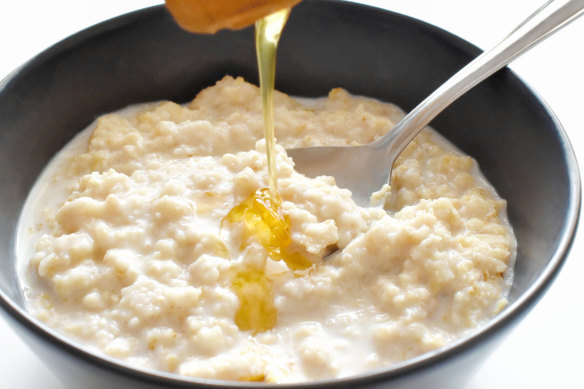
Oats
You cannot go past any 100 per cent whole oat option as the No. 1 breakfast of choice. This 100 per cent wholegrain option offers a range of key nutrients including dietary fibre, zinc, vitamin E and selenium. It also has a low GI that supports tightly controlled glucose levels. Oats are also one of the most satiating of all foods and a breakfast option likely to keep you full and satisfied for several hours.
Carman’s Fruit Free Muesli
There are many, many nutritious granola and muesli options in supermarkets, ranging from low in sugar to high protein, but this option is a standout nutritionally for a number of reasons. Not only is the ingredient list extremely simple, but its mix of whole grains, seeds and nuts creates a delicious cereal that is exceptionally high in the long-chain plant form of omega-3 fats. With 5g of dietary fibre per serve and just 4g of sugars, this is one of the best-tasting, nutritionally balanced muesli options available.
Weet-Bix Multi-Grain
This fibre-rich option is preferable nutritionally to regular Weet-Bix thanks to the mix of 73 per cent whole grains. Not only do these breakfast biscuits taste great, they also have a number of extra benefits for digestive health.
Carman’s Cholesterol Lowering Oats
All whole oat options are great breakfast cereal choices nutritionally, but for anyone with high cholesterol, opting for an option with plant sterols added may help to naturally lower cholesterol levels by as much as 10 per cent.
Kellogg’s All Bran Wheat Flakes
For digestive health, you can’t go wrong with a decent daily serving of wheat bran, but not all options are particularly palatable. The good news is that this flaked option tastes pretty good, and with less than 5g of sugars per serve and more than 7g of dietary fibre, including insoluble and soluble fibre, your digestive health will benefit from a daily serving of high-fibre cereal like this.
The best recipes from Australia's leading chefs straight to your inbox.
Sign up